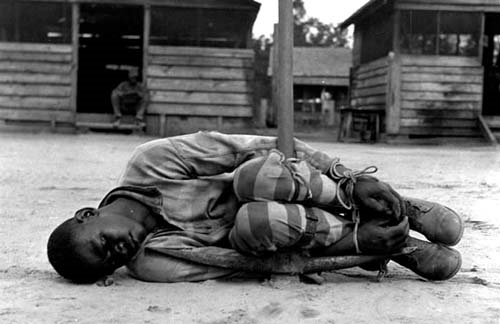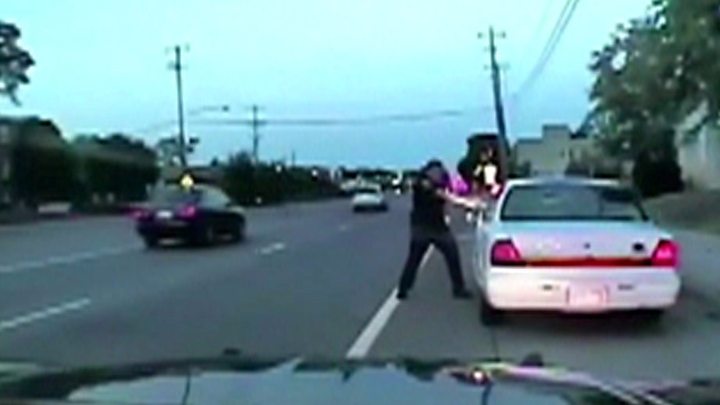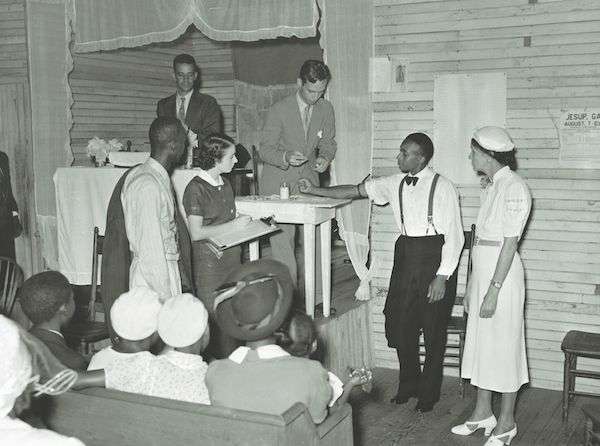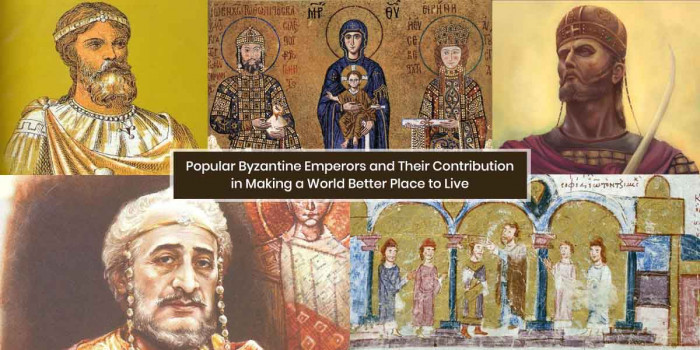10 Black History Incidents That Raised Eyebrows & Changed the World
Take a look at the incidents in Black History that changed the future and also shocked everyone. The below list combines great and shocking incidents.

History is full of bizarre and dark events. Sometimes, when you think history has WWII and the Battle of Stalingrad, it also has stories of brave people who changed the entire world; for instance, the speech by Dr. Martin Luther King and the courageous story of the Underground Railroad. While black history has several horrid moments, it also has stories that everyone should know to understand the events that changed or shaped the present.
Black History Month is celebrated in February in the US and Canada, while it is celebrated in October in the Netherlands, the UK, and Ireland. The story of this Black History Month was started in 1915 after the thirteenth Amendment abolished slavery in the US. In September 1915, the historian Carter G. Woodson and minister Jesse E. Moorland launched an organization ASNLH, Association for the Study of Negro Life and History. The organization was dedicated to promoting achievements by black Americans and people of African descent.
Today, it is known as the Association for the Study of African American Life and History (ASALH). The group chose the second week of February to sponsor a national Negro History week in 1926. The event inspired communities worldwide to establish history clubs, lectures, and to host local celebrations.
By the late 1960s, the awareness of the event evolved into Black History Month. Gerald Ford, the President, recognized the Black Month in 1976 and told the public to celebrate and honor the Black Americans in every aspect of history. Let us read some shocking and courageous incidents of Black History that raised the eyebrows.
1. The Birmingham Campaign

The Birmingham movement or campaign was organized by the Southern Christian Leadership Conference to bring attention to the efforts of African Americans in Birmingham. It was led by Martin Luther King and others.
In the early 1960s, Birmingham was the most racially divided cities in the US. Protests began when Fred Shuttlesworth pressurized business leaders to give employment to people of all races and to end segregation everywhere, including schools and restaurants. The local and government leaders opposed the boycott, but the activists began Project C, a series of marches to provoke mass arrests.
Several students and people were trained to participate in the event by taking a walk 50 at a time from Baptist Church to City Hall to talk to the judges about the Segregation. This walk resulted in a thousand arrests. Police used dogs and water hoses to attack men and even children.
The Birmingham movement ended in 1963 when the officials agreed to remove White and Black Only signs from the restrooms, deployed a Negro job improvement, and created a biracial committee to monitor the agreement.
2. Judge Edward Aaron Was Abducted by Ku Klux Klan Group

The case of Judge Edward Aaron is considered the worst case in Black History. Born in 1923, Edward was an African American Handyman in Birmingham. He was abducted by the members of Asa Earl Carter’s independent Ku Klux Klan group on September 2, 1957. He was disabled and was beaten with an iron bar.
The Klan members carved the letters KKK on his chest and even poured turpentine on his wounds. He was then put in the car and drew away from the location and dumped near a creek.
When he was found by the police, he lost much blood and was about to die. They took him to the hospital. Six men from the group were arrested and received 20 years sentence at Kilby Prison. But when George Wallace became governor of Alabama, he released them.
3. Dred Scott - A Slave to John Emerson

Dred Scott v. Sandford was an important decision of the US Supreme Court. Dred Scott was a slave to John Emerson of Missouri. The owner took him from Missouri to Illinois (a free state) and then into the Wisconsin Territory.
During this, he met his wife Harriet Robinson, who also became part of his household. They came back to Missouri (a slave state), Scott filed a case in the court, saying that he had been taken into a free state and was no longer a slave.
The Missouri state claimed that he was still a slave according to law. He then sent the case in US federal court, but the court denied to accept the case and decided it should be applied at Missouri. Later, he sent the case to the US Supreme court.
The Supreme Court issued a 7-2 decision against him. In the decision by the judge, the court ruled that black people were not included under the citizens in the Constitution, and nothing can be claimed. He supported his ruling, along with other surveys, and by using local laws from the time of the Constitution's drafting in 1787. His case was not filed because he was not an American citizen, any federal lawsuit he filed got denied automatically.
After looking at these issues, two justices - John McLean and Benjamin Robbins wrote that the majority of the survey was inaccurate, and a few cases show that black people had been citizens at the time of Constitution creation. After the victory in 1865, the Thirteenth Amendment abolished slavery, and the next Amendment guaranteed citizenship for all people. It said -
“All persons born or naturalized in the United States, and subject to the jurisdiction thereof.”
4. Emmett Till - A Black Young Boy Who Was Abducted & Killed for Flirting with a White Woman

Born on 25 July 1941, Emmett Till was a 14-year old African American boy who was accused of offending a white woman in a grocery store. During his summer vacation in 1955, he visited his relatives in the Mississippi Delta region. There, he spoke to a 21-year old white woman. He was accused of flirting with her.
A few days after the incident, the lady’s husband and half-brother abducted the boy. They beat him, and before shooting him, they sink his body in the Tallahatchie River. His body was returned to Chicago. His mother insisted on having a public funeral service with an open casket. Her decision showed the limitations and vulnerabilities of American democracy and on the US racism.
It was in September 1955 when the two men were not found guilty of Emmett kidnapping and murder. They publicly admitted in an interview that they killed him. An Emmett Till Memorial Commission was opened in the 21st century. Around 51 sites in the Mississippi Delta are associated with Till.
5. 16th Street Baptist Church Bombing

The Baptist Church Bombing was an act of supremacist terrorism that happened at the African-American 16th Street Baptist Church in Alabama on 15 September 1963. A few members of the Ku Klux Klan, a religious cult, planted dynamites on the east side of the church. The explosion killed four girls and injured over 20 persons.
The church was used as a meeting place of the leaders. After the bombing, thousands of black protestors gathered at the location. When the governor sent police and troopers to break the protests, several protestors were arrested, and two young African-Americans were killed.
FBI concluded in 1965 that the bombing was planned by the members of Ku Klux Klansmen, but the suspects were not prisoned until 1977. The case was reopened in 1988 and 1997 when two members of the group were brought to trial. Blanton and Cherry were convicted in 2001 and 2002, respectively. One member, Herman Frank Cash, died before he could be brought to trial.
6. The Shooting of Philando Castile

A 32-year old, African American Philando Castile was killed by St. Anthony, Minnesota police officer Jeronimo Yanez, on 6th July 2016. Castile was driving a car with his Gf and 4-year-old daughter when he was pulled over by Yanez and another police officer for a busted tail-light at the Suburb Paul, MN.
His Gf recorded this event with her phone as their kids cried in the backseat. He killed Castile as he told the officer that he had a gun with a concealed permit. Yanez was not found guilty and was acquitted.
The video went viral after her Gf Diamond Reynolds shared the live-streamed video on FB. Yanez was 28 years old when he shot Castile.
7. Rodney King Was Beaten by LAPD Officers

Born on April 2, 1965, Rodney Glen King was a writer, activist, and an American construction worker who was beaten by LAPD officers during his arrest for evading on California State Route 210. They caught him and ordered him to come out of the car. They beat him for 15-20 minutes, and the incident was recorded with other police officers watching it and doing nothing. Glen King suffered brain damage, broken bones, fractures, and broken teeth.
The four officers were charged but later acquitted. Within hours, the 1992 Los Angeles riot started and sparked outrage among African Americans over the longstanding social issues. The city of Los Angeles awarded King with $3.8 million in damages. He started a business, but it failed. Later in 2012, he was found dead in a swimming pool. The report claimed that he died of alcohol and drugs; his history of heart problems had resulted in drowning.
8. The Assassination of Martin Luther King Jr.

Born on 15 January 1929, in Atlanta, Georgia, Martin Luther King Jr. was an activist who became the spokesperson and leader in the Civil Rights Movement from 1955 until his assassination in 1968. He was best known for promoting civil rights through civil disobedience and nonviolence, inspired by the activism of Mahatma Gandhi and his Christain beliefs. He supported and brought attention to strike in over 1300 city sanitation workers, but his journey to Tennessee cost him his life.

He was killed on the second floor of the Lorraine Motel. He died when he was 39 years old. This sparked a wave of riots across 100 cities, including Washington D.C. and Chicago. He stayed in this hotel because it was one of the best known friendly hotels for African Americans. At the hotel, in his famous Mountain Top speech, he told the crowd -
“I've seen the Promised Land. I may not get there with you. But I want you to know tonight, that we, as a people, will get to the Promised Land.”
In 1969, Ray pleaded guilty to King’s murder. He was sentenced to 99 years of jail but died from kidney disease at the age of 70. Check more notorious American assassins.
9. The Tuskegee Syphilis Experiment

You will be shocked to know that when African Americans got sick, they were not treated, instead experimented to see the effects of the disease. This is the most notable case in Black History, which showed how African Americans were treated.
In Alabama, over 600 African Americans suffered from syphilis were experimented to see the effects and not given medication to improve health. They were given placebos and told that they had bad blood.

Public Health Service worked on this study in 1932 in collaboration with Tuskegee University. Investigators had to work on 600 African Americans from Alabama (out of 600, 399 had Syphilis, and 201 did not have the disease). The men were given meals, medical care, and free burial insurance to participate in the activity. The study lasted 40 years.
Public Health Service didn’t treat people with Penicillin even after the antibiotic was proven for the disease. It convinced physicians not to treat the men. They did nothing, and the sufferers went blind and experienced other severe problems. Here are more lethal diseases that changed the world.
10. Rwandan Genocide - The Mass Slaughter of Hutu and Tutsi

Genocide against the Tutsi or better known as the Rwandan Genocide was a mass slaughter of the Tutsi and moderate Hutu in Rwanda. It took place between 7 April and 15 July 1994 during the Rwandan Civil War. The Genocide had shocking effects on the neighboring countries.
In 1994, the Hutu ethnic in Rwanda murdered over 800,000 people. They were the members of the minority Tutsi community. By the time the military offensive could stop this, above 2 million people were displaced and became refugees.
About 85% of Rwandans were Hutus, but they were of the Tutsi minority and dominated the country. It was in 1959, the Hutus overthrew the Tutsi monarchy, and thousands of Tutsis fled to neighboring countries. The Genocide was sparked after the death of the Rwandan President Juvenal Habyarimana, a Hutu’s plane was shot down above Kigali airport in 1994.
Final Words
Black history is part of the history of African Americans in the US. What is your opinion - does racism still exist between Black and White Americans? Do you know any incident that shows this? Do you think only males have changed US history? No. These African American female slaves have also suffered and contributed a lot in making an impact in the world.
Have you ever heard about these stories? How was your reaction to it? Do you know other events that should be listed on the Black History events? If so, share them with us below.
Popular Posts
Top 10 Sharpest & Deadliest Swords In History
In classic mythological movies, books and television, we’ve seen those audacious sword-wielding heroes smiting the enemi...
Augustus Perez
List of Water Deities from Different Mythologies
Water deities are the gods and goddesses who had the powers to control the elements of water and ruled over all the fresh and saltwater of the earth. Here’s a list of water deities from different mythologies.
Rishika Gupta
Winged Lion: The Terrifying Mythical Creature In Different Mythologies
A mythological creature, a winged lion dates back to ancient times. This flying lion-like creature has origins in Heraldry, Christianity, Mesopotamian, and Greek mythologies.
Ethan Stephans








